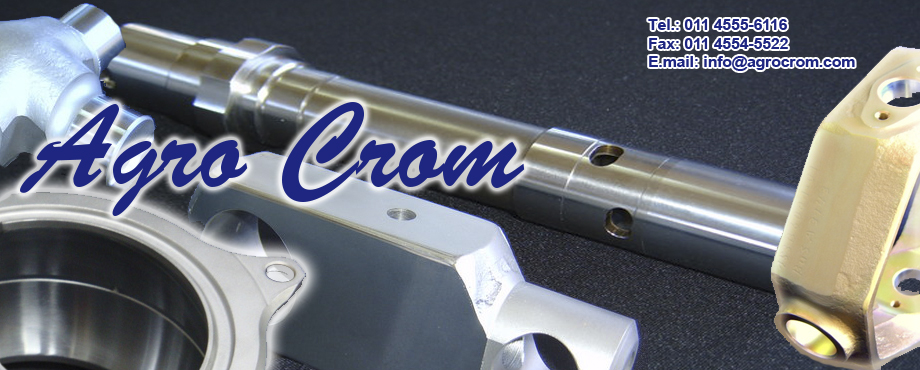F.A.Q
Hard Chrome
1- On what materials can hard chrome be applied?
Hard chrome may be deposited on a wide variety of metals. Steel, stainless steel, copper and brass metals are more receptive to a deposit adherent. Exotic metals, such as aluminum, nickel-based alloy ( Inconel , Hastelloy ) nitrided steels, are more difficult to chrome , but with proper pretreatment methods can be achieved.
2- What deposit thickness of Hard Chrome can be applied?
Deposit thicknesses ranging from “flash” (very thin deposits 0.0005” to 0.001”) to “heavy build “(in some cases up to 0.040” ) . The final application of the part generally determines the thickness of the deposit required.
With the increase of the thickness applied of Hard Chrome, surface defects and roughness are amplified because the Hard Chrome does not have a leveling effect. Usually a greater thickness, greater than that required, has to be applied to then grind the part into the desired dimensions.
3- What is the hardness of the Chrome deposit?
Hard Chrome deposit has a hardness of about 900 Hv ( 66 Rc) . Hardness testing should be done in accordance with ASTM B- 578 (except that a Vickers indenter and 100 gram load must be used (QQ-C-320) the use of higher loadings would perforate the chrome layer and generate erroneous results)
4- What chrome thickness should you specify?
If you do not have a thickness requirement, drawing or specification, please contact us. We can help you discuss your application and determine the required thickness as needed.
5- Does AGRO CROM perform decorative chrome?
AGRO CROM does not perform “decorative chrome” that which is used in car bumpers, motorcycle fenders, tables, chairs, etc.
6- Can Hard Chrome be removed from a part once it is applied?
In most cases, the existing chrome, whatever its thickness may be, can be removed by chemical stripping or grinding. In many cases, chemical removal is recommended.
7- Does hard chrome plating make the part more fragile?
Yes, as it occurs in all electrochemical processes.
But with de-embrittlement treatment this is solved. Provided that high strength steels are stress-relieved before plating and heat-treated again afterwards (usually for 3 to 12 hours at about 375*F)
Electroless nickel
1- What is electroless nickel?
Electroless nickel plating is a coating of nickel and a various percentage of phosphorus.
2- How does the electroless nickel work?
Does not require anodes or outside power source; Chemical reactions on the surface of the part being plating cause deposition of the nickel alloy. This occurs on all wetted surfaces which in turn produces a uniform thickness.
3- What are the benefits of electroless nickel?
· Corrosion Protection
- · Excellent Adhesion
- · Hardness
- · Wearability
- · Uniform deposit regardless of work piece geometry
4- What are the advantages of electroless nickel versus electrolytic nickel?
· Uniformity of thickness
- · Better corrosion protection
- · Superior adhesion
- Better lubricity
5- What is the appearance of electroless nickel plating?
An electroless nickel finish is similar to stainless steel in coloration. Surface finish will replicate the finish of the base metal. A brightly polished surface before plating will have a bright finish after plating. A matte or satin finish before plating will have a matte or satin finish after plating.
6- Can it be applied on aluminum?
Yes, with proper pretreatment it is possible.
7- What thickness is it applied?
The thickness typically ranges between 0.0005” to 0.002” . Due to the uniformity and thickness control, parts do not require posterior grinding.
